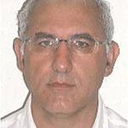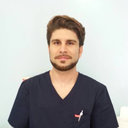[The 1562 De dentibus by Girolamo Cardano].
Từ khóa
trừu tượng
"In the year 1562, having noticed that none of the ancient or modern physicians had treated the subject of dental care, I wrote this first book on the teeth". So begins the preface to the five books of the Opuscula medica senilia by Girolamo Cardano, the first organic text on dentistry in history. It competed with the famous Libellus de dentibus by Bartolomeo Eustachio that appeared in 1563 (but was written in 1562). However, our intention is not to establish precedence but bring to reader's attention Cardano's work that complemented Eustachio's anatomy and physiology of the teeth with their pathology and therapy. This article summarises Cardano's biography and gives a brief review of literature on the De dentibus and of his first complete translation from Latin into Italian. De dentibus is the first of the five books of the Opuscula and is divided into three chapters, as described below. Chapter one, De dentibus, recalls briefly the anatomy and embryology of human teeth as bones and compares them with the teeth of some animals. Follows a description of systemic and local procedures, to preserve, protect, and cure the teeth. Preservation and protection are related to diet, sleep, physical activity, systemic and local medicaments, and amulets., whereas therapy involves remedies taken over from the Ancient Greek and Roman medicine (Hippocrates, Archigenes, Galen, Scribonius, Pliny the Younger, Ezio, Marcellus Empiricus ) and Arabic medicine (Avicenna in particular). The chapter continues with guidelines and procedures for shedding teeth that are damaged beyond repair using a special saltpetre and alum distillate of Cardano's own invention, which he finds very effective. The chapter concludes with tooth extraction tools and methods, especially the one by Scribonius Largo with red-hot iron. Chapter two, -De morbis dentium in specie, describes diseases that affect the teeth and that can cause ache, mobility, weakness, numbness, or deformity (dolor, commotio, imbecillitas, stupor, deformitas). All these conditions may interact, creating a wide range of situations. Ache has seven possible causes that include altered humour, a cavity, a nerve injury, an abscess, breath (flatus), worms, and cold, and Cardano describes the remedies at physician's disposal that even include spells. The causes of mobility are the same as for the ache plus periodontal problems such as dry root or alveolar laxity, and the author discusses local and systemic treatment options. Weakness is considered the worst of the dental pathologies, as it can easily require extraction. Stupor is caused by the corruption of the tooth or a nerve injury, and Cardano refers to it as a life-threatening condition (quoad vitam) in older people if untreated, but also easy to remedy if detected early. Cardano then identifies a whole series of deformities: tooth colour, roughness, fracture, position, number, absence, length, calculus, bad smell, and porosity, and for each of them he offers a wide variety of remedies, in part original and in part borrowed from the ancients. In the last part, Cardano stresses the need to extract as few teeth as possible: "I've never seen anyone die from the diseases of the teeth, except for a tooth extracted inappropriately" To emphasize the dichotomy between medicine and surgery, he explains that tooth care is medical, but extraction requires an experienced surgeon. Chapter three, De fluxione, frequentissima causa morborum dentium, identifies gumboil as a frequent cause of dental disease, and describes the pathogenesis and therapy of gumboil-related diseases, gout in particular.




